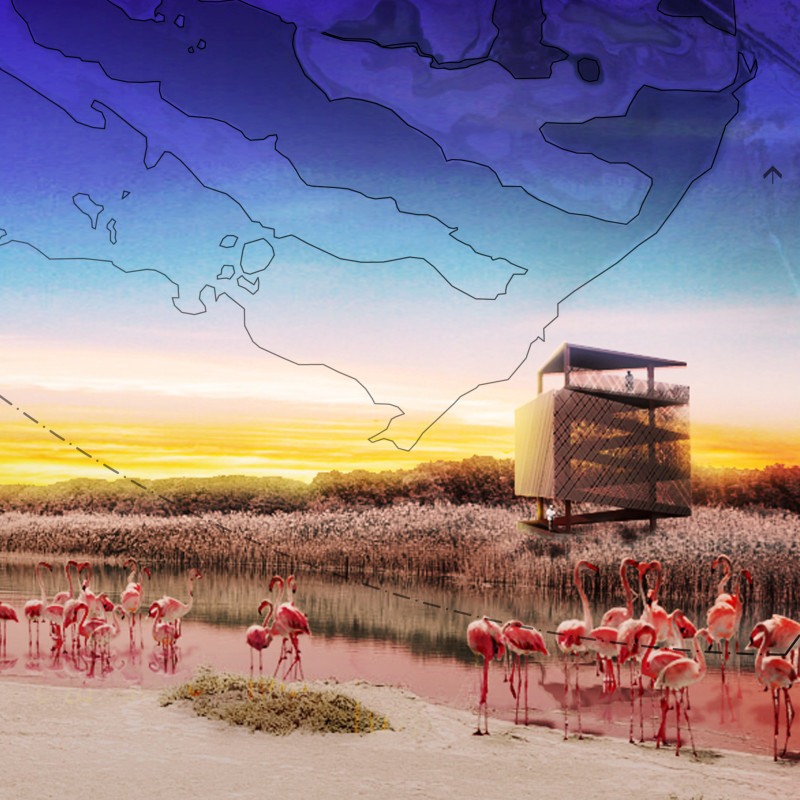5 key facts about this project
In function, the project is designed to facilitate wildlife observation while ensuring minimal disturbance to its inhabitants. It acts as a gathering place for both education and recreation, where visitors can appreciate the local flora and fauna from strategically placed vantage points. The architecture not only caters to aesthetic enjoyment but also functions as an interactive platform that fosters a deeper awareness and appreciation of nature.
The project incorporates several key elements that are significant to its overall design and impact. One notable aspect is the use of a multi-level observation tower, which allows for panoramic views of the wetlands. This structure is complemented by elevated boardwalks that provide necessary access while preserving the integrity of the wetland ecosystem. These features create a blend of accessibility and immersion into the natural surroundings, encouraging users to experience the environment in a manner that feels both engaging and unobtrusive.
Material selection plays a crucial role in the project’s identity. Bamboo screening is employed, offering natural textural elements that resonate with the landscape. Corten steel columns are utilized for their strength and visual appeal, developing a weathered yet elegant aesthetic that complements the natural setting. Additionally, Ipe wood decking ensures durability and long-lasting performance, while perforated panels serve a dual purpose by providing shade and strategic sightlines.
A unique design approach is evident in the way the project addresses environmental harmony. By elevating the structure above the marshlands, the design effectively reduces human impact on sensitive ecological areas. The thoughtful layout and materials used conform to the natural changes within the wetland, allowing the architecture to adapt as the environment evolves. This sensitivity to the setting distinguishes the project from typical architectural endeavors, proposing a model for future designs that seek to coexist with nature thoughtfully.
The incorporation of accessible pathways throughout the project underscores its commitment to inclusivity. By ensuring that all visitors, regardless of mobility, can experience the beauty of the wetlands, the design stands as an example of how architecture can be both functional and egalitarian. The careful planning of viewing platforms enhances the educational aspect of the site, allowing for a rich interaction with wildlife while respecting their habitats.
For those interested in architectural details, the project presentation offers insightful elements such as architectural plans, sections, and designs that provide further context to the ideas implemented. Each aspect of the design has been meticulously considered to enhance user experience while promoting a sustainable relationship with the environment. Visitors are encouraged to explore these details to gain a deeper understanding of the project and the architectural thought process behind it.


























